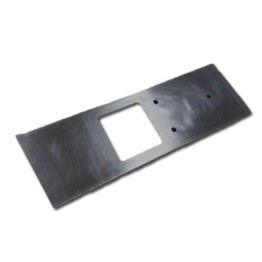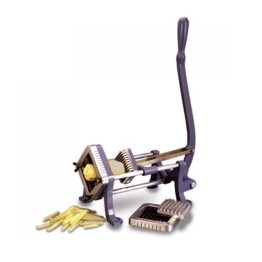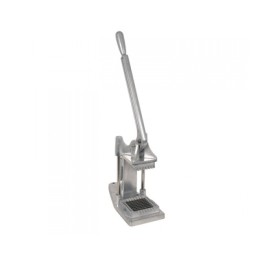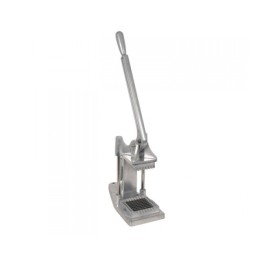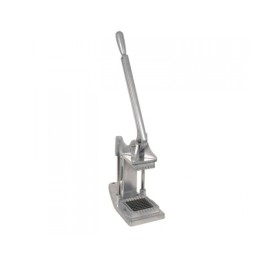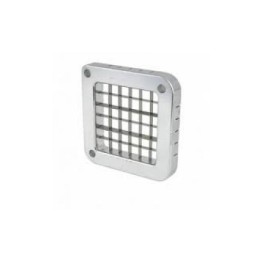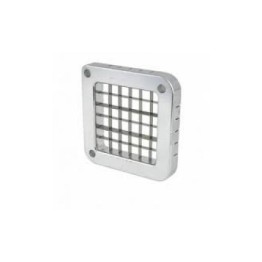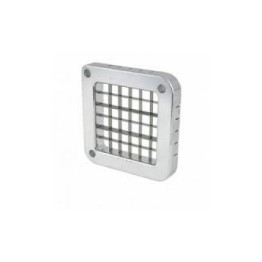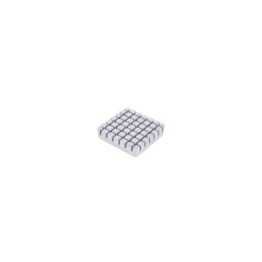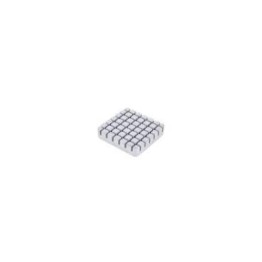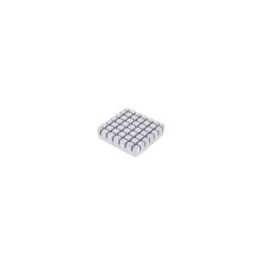Chippers and Chip Cutters: Essential Tools for Perfect Potato Chips and Fries
Chippers, also known as chip cutters, transform ordinary potatoes into delicious chips or fries with remarkable efficiency. These specialized kitchen devices save valuable time in both commercial and home settings. Restaurant owners, catering businesses, and food processing plants rely on these tools to maintain consistency in their food preparation. Moreover, they boost productivity by eliminating tedious manual cutting. The right chipper ensures perfect cuts every time, enhancing your customer’s dining experience and streamlining your kitchen operations.
What Are Chippers and Chip Cutters?
Chippers precisely cut whole potatoes into uniform rectangular chips of various thicknesses. They consist of sharp blades or disks arranged in specific patterns to create consistent cuts. Most importantly, these devices come in different designs to suit various production needs. Manual chippers require physical force to push potatoes through the cutting blades. In contrast, electric models automate this process, handling higher volumes with minimal effort.
Commercial-grade chippers feature durable materials like stainless steel or aluminum alloy. Additionally, they offer adjustable blade settings to create different chip thicknesses. The cutting mechanism typically includes a grid of sharp blades that potatoes pass through. As a result, you get perfectly cut chips in seconds rather than minutes of manual labor.
Types of Chippers Available
Manual Chippers
Manual chippers operate through hand pressure or leverage systems. First, you place a potato in the loading area. Then, you push down on a handle to force the potato through the cutting grid. These models work well for smaller operations or home use. Furthermore, they require no electricity, making them versatile and portable.
Floor-Standing Industrial Chippers
Industrial chip cutters feature heavy-duty construction for high-volume environments. These floor-standing models handle continuous operation in busy commercial kitchens. Most importantly, they process large quantities of potatoes quickly and efficiently. Some models include interchangeable blades for versatility in cut styles and sizes.
Tabletop Commercial Chippers
Tabletop chippers offer a compromise between manual and floor-standing models. They take up less space while still providing significant cutting power. Additionally, they work well in medium-sized operations where counter space is available. Most tabletop models feature sturdy construction to withstand regular commercial use.
Benefits of Using Professional Chip Cutters
Time and Labor Savings
Professional kitchens benefit immensely from chippers. For instance, a chef might spend 30 minutes manually cutting chips for a service period. However, a chipper completes the same task in just 5 minutes. This efficiency allows staff to focus on other critical food preparation tasks. Consequently, overall kitchen productivity improves dramatically.
Consistency in Product Quality
Customers expect consistency in their food, especially when ordering favorites like chips or fries. Chippers deliver uniform cuts every time, ensuring each batch cooks evenly. As a result, your establishment’s reputation for quality and consistency strengthens. Furthermore, presentation improves with professionally cut chips that look appealing on the plate.
Reduced Food Waste
Manual cutting often leads to irregular pieces and increased waste. In contrast, chippers maximize yield from each potato. The precise cutting action utilizes more of the vegetable, reducing food costs over time. Additionally, consistent cuts lead to predictable cooking times and fewer burnt or undercooked chips.
Choosing the Right Chipper for Your Needs
Volume Requirements
Small cafés or home kitchens might manage well with manual or tabletop models. However, busy restaurants require industrial floor-standing chippers. Consider how many kilograms of potatoes you process daily. Subsequently, select a model rated for that capacity or slightly higher to avoid overworking the equipment.
Space Considerations
Floor space comes at a premium in most commercial kitchens. Therefore, measure available space before selecting a chipper. Tabletop models typically measure 30-40cm in height, while floor-standing units can reach 1-1.5 meters. Additionally, ensure adequate clearance for loading potatoes and collecting the cut chips.
Material and Construction Quality
Stainless steel chippers resist corrosion and maintain food safety standards. Moreover, they withstand the rigors of commercial kitchen environments. Cast aluminum offers lighter weight but still provides durability for regular use. Look for smooth, welded joints that prevent food particles from collecting in crevices.
Blade Configuration Options
Different establishments require various chip styles. French fry restaurants might need 10mm x 10mm cuts. Meanwhile, fish and chip shops often prefer thicker 13mm cuts. The best chippers offer interchangeable blade assemblies for versatility. Furthermore, some models provide waffle or crinkle-cut options for menu variety.
Maintenance and Care of Chip Cutters
Daily Cleaning Procedures
Clean your chipper thoroughly after each use to prevent bacterial growth. First, disassemble removable parts according to manufacturer instructions. Then, wash them in hot, soapy water. Rinse well and sanitize with an appropriate food-safe solution. Finally, allow all parts to dry completely before reassembly.
Blade Maintenance
Sharp blades ensure clean cuts and reduce strain on the machine. Therefore, inspect blades regularly for signs of dulling or damage. Many commercial kitchens keep replacement blades on hand to minimize downtime. Additionally, some manufacturers offer professional sharpening services for their equipment.
Lubrication and Moving Parts
Moving parts require periodic lubrication with food-grade lubricants. Check manufacturer recommendations for suitable products and application schedules. Importantly, wipe away excess lubricant before using the chipper to prevent food contamination. Regular maintenance extends the lifespan of your investment.
Applications in Various Settings
Restaurants and Takeaways
Fast-food establishments and restaurants benefit immensely from efficient chippers. They enable consistent product quality during busy service periods. Additionally, staff training simplifies when using standardized equipment. Many successful establishments consider quality chippers essential kitchen equipment.
Catering and Event Services
Catering companies often prepare large volumes of food in limited time frames. Therefore, efficient chip production becomes critical for successful service. Mobile chippers allow preparation at event venues when necessary. Consequently, food arrives fresher and requires less transport space when prepared on-site.
Food Processing Plants
Industrial food processing facilities use specialized large-scale chippers. These machines handle tons of potatoes daily for packaged frozen chips. Similarly, snack manufacturers rely on precise cutting equipment for consistent products. The largest models feature continuous feed systems for uninterrupted operation.
Home and Small-Scale Use
Home cooks increasingly invest in quality chippers for family meals. Although smaller than commercial models, these devices still save significant preparation time. Moreover, they encourage healthy home cooking by simplifying fresh chip preparation. Many home models feature dishwasher-safe components for easy cleaning.
Economic Benefits of Investing in Quality Chippers
Return on Investment Calculations
High-quality chippers represent significant upfront investments. However, labor savings quickly offset initial costs. For example, a restaurant saving two hours of prep time daily might recoup their investment within months. Furthermore, durable models provide years of reliable service before replacement becomes necessary.
Reduced Labor Costs
Manual chip cutting requires skilled staff time. Conversely, chippers allow less experienced staff to produce professional results. This flexibility in staffing provides operational advantages during busy periods. Additionally, reduced prep time allows more efficient allocation of labor resources throughout the kitchen.
Menu Pricing Considerations
Consistent, professional-quality chips command premium prices on menus. Customers readily recognize and appreciate well-prepared foods. Therefore, investing in proper equipment directly impacts revenue potential. Many establishments find they can charge 15-20% more for properly cut and cooked chips.
Chippers and chip cutters represent essential investments for food service operations. They dramatically improve efficiency while ensuring product consistency. Furthermore, they reduce labor costs while maximizing raw ingredient yield. The right chipper transforms potato preparation from tedious labor to simple production.
When selecting a chipper for your operation, carefully consider volume requirements, space limitations, and quality needs. Additionally, factor in ongoing maintenance requirements and replacement part availability. The most successful kitchens maintain their equipment meticulously for optimal performance.
Whether you operate a small café or large restaurant, quality chippers provide immediate operational benefits. Most importantly, they contribute to customer satisfaction through consistent, professional food presentation. Therefore, consider chip cutters not as expenses but as investments in your operation’s efficiency and reputation.




